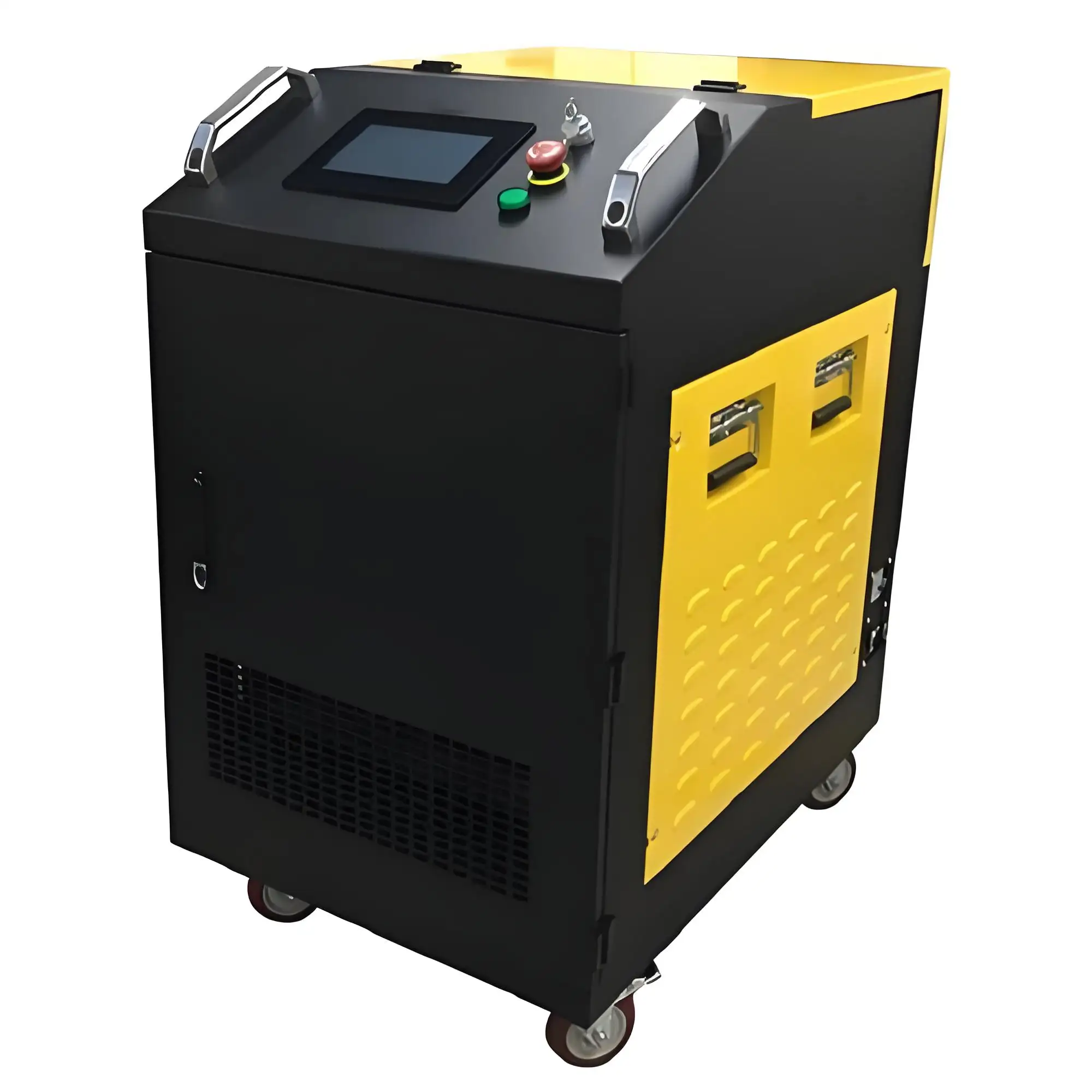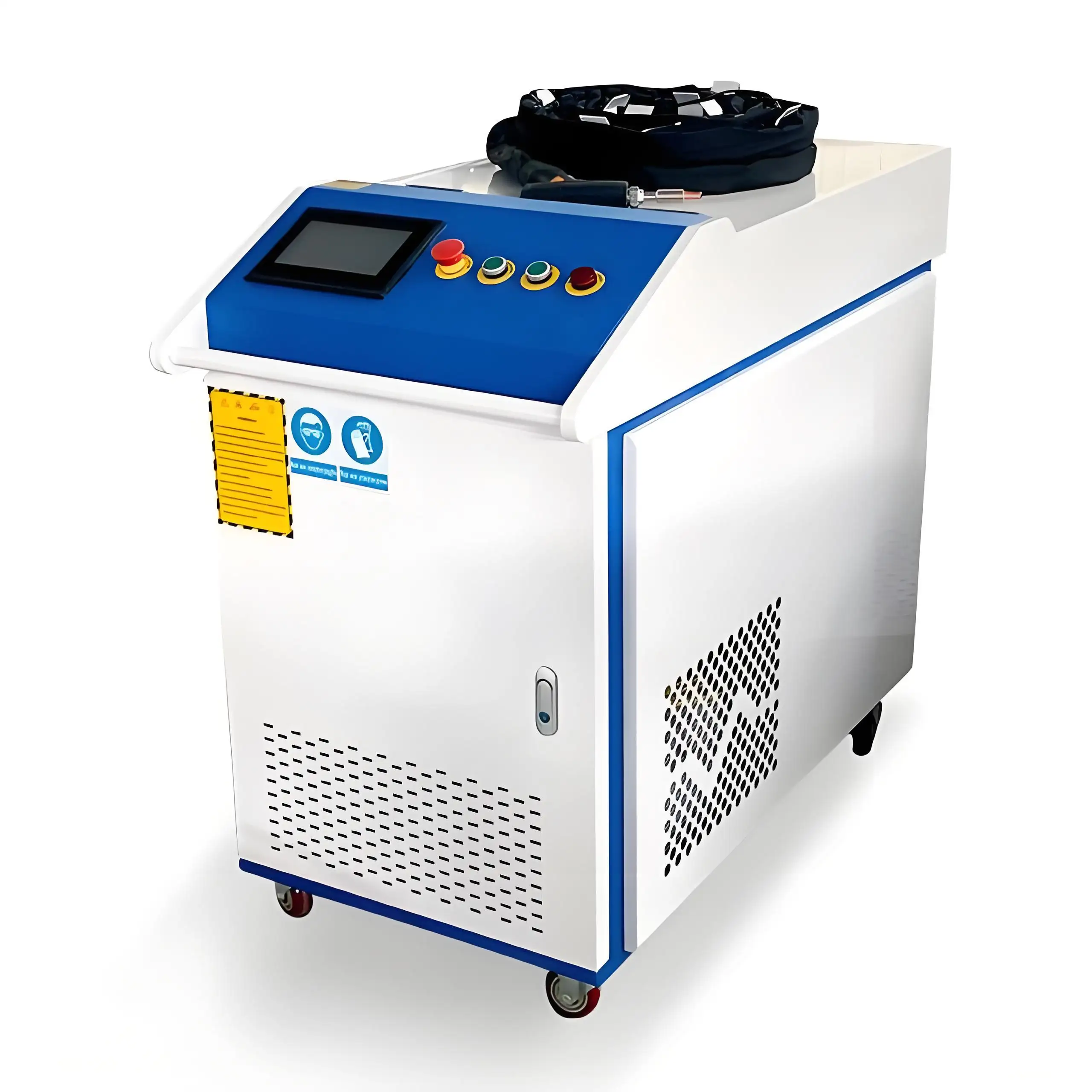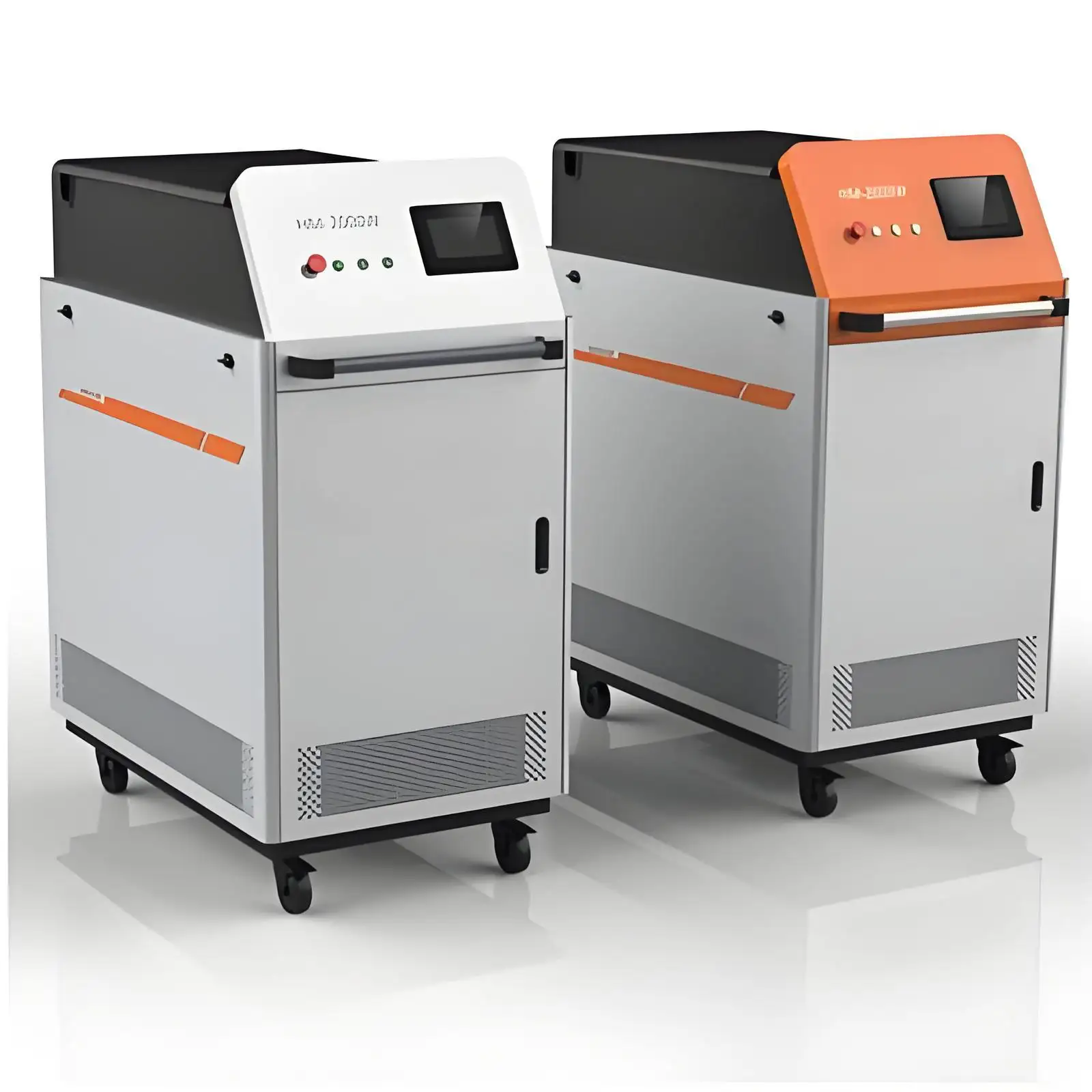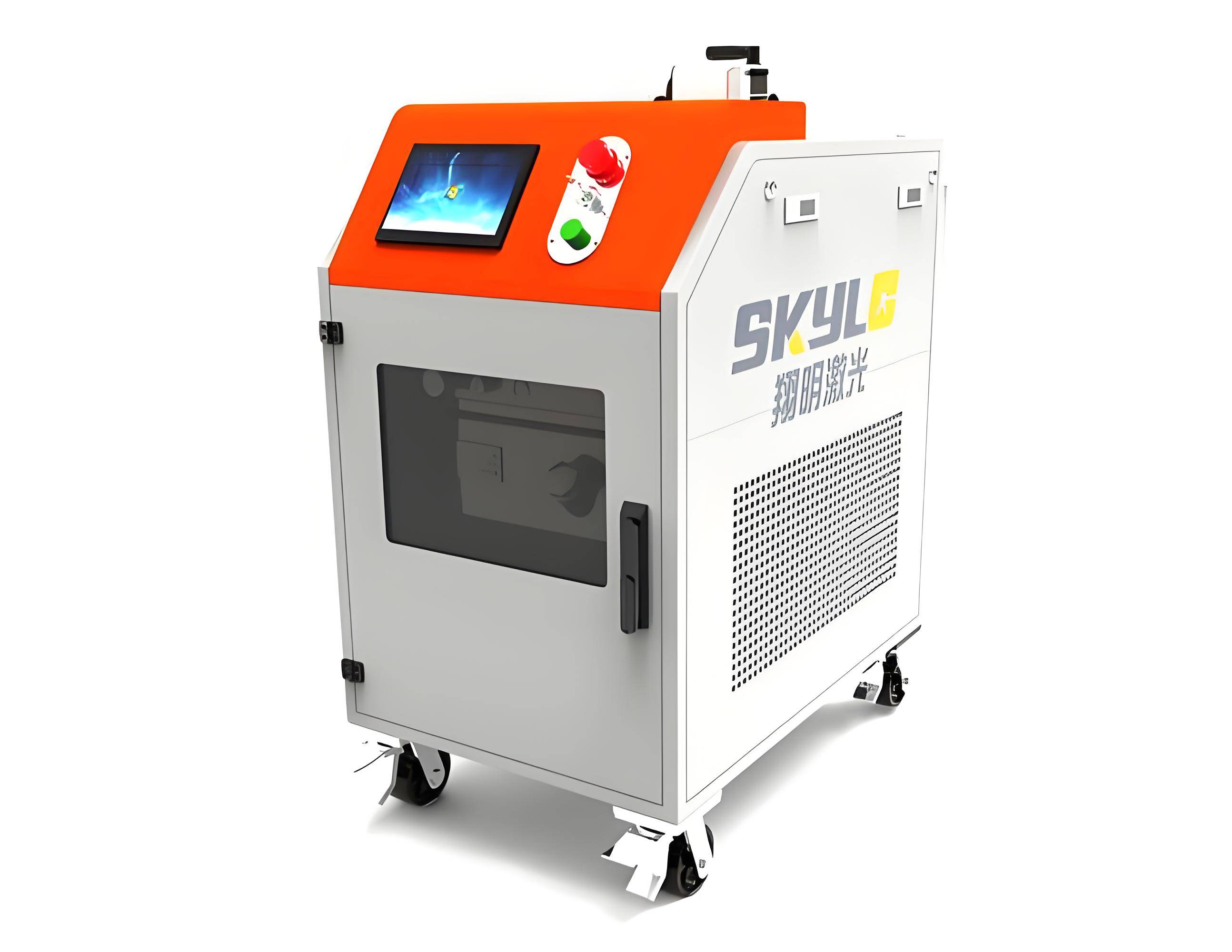In the ever – evolving landscape of industrial manufacturing and maintenance, the quest for efficient, cost – effective, and environmentally friendly surface cleaning solutions has led to the widespread adoption of laser rust removal machines. As someone who has been deeply entrenched in the laser technology and industrial cleaning sector for numerous years, I’ve witnessed firsthand the transformative impact these machines can have on various factory operations. In this article, I’ll delve into the diverse factory scenarios where laser rust removal machines shine, providing you with a comprehensive understanding of their applications and benefits.

The Basics of Laser Rust Removal
Before we explore the factory scenarios, let’s briefly recap how laser rust removal works. Laser rust removal machines utilize high – energy laser beams to interact with the rust or contaminant layer on a surface. The laser energy is absorbed by the rust, causing it to rapidly heat up, expand, and eventually break away from the underlying substrate. This process is highly precise, as it targets only the rust layer without damaging the base material when the correct parameters are set.
The advantages of laser rust removal over traditional methods, such as sandblasting or chemical cleaning, are numerous. It is a non – contact process, which means there is no physical abrasion or chemical residue left behind. This not only preserves the integrity of the substrate but also reduces the need for secondary cleaning or surface treatment. Additionally, laser rust removal is a dry process, eliminating the need for water or chemicals, making it more environmentally friendly and cost – effective in the long run.
Automotive Manufacturing and Repair Factories
1. Body Panel Preparation
In automotive manufacturing, the body panels need to be free of rust, paint, and other contaminants before they can be painted or coated. Laser rust removal machines can efficiently clean the surface of body panels, removing even the most stubborn rust spots and ensuring a smooth and clean surface for the subsequent painting process. This helps to improve the adhesion of the paint, resulting in a higher – quality finish and longer – lasting paint job.
For example, in a large – scale automotive assembly plant, laser rust removal machines can be integrated into the production line to clean body panels in a fast and automated manner. The high – speed and precision of the laser process allow for a high throughput, meeting the demanding production schedules of the automotive industry.

2. Engine and Component Cleaning
Automotive engines and components are often exposed to harsh environments, leading to the formation of rust and corrosion. Laser rust removal machines can be used to clean engine blocks, cylinder heads, and other critical components, restoring their surface condition and improving their performance.
In an engine repair shop, a laser rust removal machine can quickly and effectively clean rusted engine parts, allowing for a more accurate inspection and repair. It can also be used to remove old gaskets and seals without damaging the underlying surface, making the repair process more efficient and reliable.
3. Vehicle Restoration
In the field of classic car restoration, laser rust removal is a game – changer. Traditional methods of rust removal, such as sandblasting, can be too aggressive and damage the original surface of the vehicle. Laser rust removal, on the other hand, can precisely remove the rust while preserving the original patina and details of the car.
Restoration shops can use laser rust removal machines to restore the body panels, chassis, and other components of classic cars, bringing them back to their former glory. The non – contact nature of the laser process ensures that the historical value and authenticity of the vehicle are maintained.
Marine Industry Factories
1. Ship Hull Cleaning
Ship hulls are constantly exposed to saltwater, which leads to the rapid formation of rust and marine growth. Laser rust removal machines can be used to clean the hulls of ships, removing rust, barnacles, and other contaminants. This helps to improve the hydrodynamic performance of the ship, reducing fuel consumption and increasing its speed.
In a shipyard, large – scale laser rust removal systems can be deployed to clean the hulls of ships of various sizes. The high – power laser beams can penetrate deep into the rust layer, ensuring a thorough cleaning. Additionally, the laser process does not generate any waste or debris that could potentially harm the marine environment.
2. Offshore Platform Maintenance
Offshore oil and gas platforms are also prone to rust and corrosion due to the harsh marine environment. Laser rust removal machines can be used to clean the structural components of the platforms, such as pipelines, support structures, and equipment. This helps to extend the lifespan of the platforms and ensure their safe and reliable operation.
Maintenance teams can use portable laser rust removal machines to access hard – to – reach areas of the platforms, performing cleaning and maintenance tasks without the need for extensive scaffolding or disassembly. The fast and efficient cleaning process minimizes downtime and reduces the overall cost of maintenance.

3. Boat Building and Repair
In boat building and repair workshops, laser rust removal machines can be used to clean the hulls, decks, and other components of boats. Whether it’s a small recreational boat or a large commercial vessel, laser rust removal can provide a high – quality surface finish, ready for painting or coating.
Boat builders can use laser rust removal to ensure that the boats they produce meet the highest standards of quality and durability. In repair shops, it can be used to quickly and effectively clean rusted boat parts, allowing for a faster turnaround time and increased customer satisfaction.
Aerospace Manufacturing Factories
1. Aircraft Component Cleaning
In the aerospace industry, the cleanliness and integrity of aircraft components are of utmost importance. Laser rust removal machines can be used to clean the surfaces of aircraft components, such as landing gear, engine parts, and airframe structures. The high – precision laser process ensures that there is no damage to the critical components, while effectively removing rust, corrosion, and other contaminants.
In an aircraft maintenance facility, laser rust removal can be used to perform in – situ cleaning of components, reducing the need for disassembly and transportation. This helps to minimize downtime and keep the aircraft in service for longer periods.
2. Satellite and Spacecraft Manufacturing
Satellites and spacecraft are exposed to extreme conditions in space, including radiation, temperature fluctuations, and micrometeoroid impacts. These conditions can lead to the degradation of surface materials and the formation of contaminants. Laser rust removal machines can be used to clean the surfaces of satellites and spacecraft before launch, ensuring that they are free of any debris or contaminants that could affect their performance.
In a satellite manufacturing plant, laser rust removal can be integrated into the production process to provide a high – quality surface finish for the sensitive electronic components and structural elements. The non – contact nature of the laser process is particularly important in the aerospace industry, as it eliminates the risk of physical damage to the delicate components.
3. Aerospace Tooling and Mold Cleaning
Aerospace tooling and molds are used to manufacture high – precision components. Over time, these tools and molds can accumulate rust, paint, and other residues, affecting their accuracy and performance. Laser rust removal machines can be used to clean the surfaces of tooling and molds, restoring their original condition and ensuring the production of high – quality aerospace components.
In an aerospace tooling shop, laser rust removal can be a cost – effective solution for maintaining the tooling and molds. It can be performed quickly and efficiently, without the need for harsh chemicals or abrasive methods that could damage the tools.

Heavy Machinery Manufacturing and Maintenance Factories
1. Construction Equipment Cleaning
Construction equipment, such as excavators, bulldozers, and cranes, are often used in harsh environments, leading to the formation of rust and corrosion. Laser rust removal machines can be used to clean the surfaces of construction equipment, removing rust, dirt, and grease. This helps to improve the appearance of the equipment and extend its lifespan.
In a construction equipment maintenance facility, laser rust removal can be used to perform regular cleaning and maintenance tasks. The portable nature of some laser rust removal machines allows for easy access to different parts of the equipment, even in tight spaces.
2. Mining Equipment Cleaning
Mining equipment, such as drills, loaders, and conveyors, are exposed to abrasive materials and harsh conditions underground. Rust and corrosion can quickly develop on the surfaces of these machines, affecting their performance and reliability. Laser rust removal machines can be used to clean the mining equipment, removing rust and contaminants and preventing further damage.
In a mining operation, laser rust removal can be used to keep the equipment in optimal condition, reducing downtime and increasing productivity. The fast and efficient cleaning process is particularly important in the mining industry, where every minute of downtime can result in significant financial losses.
3. Agricultural Machinery Cleaning
Agricultural machinery, such as tractors, combines, and harvesters, are also prone to rust and corrosion due to exposure to moisture, fertilizers, and pesticides. Laser rust removal machines can be used to clean the surfaces of agricultural machinery, improving their appearance and functionality.
In an agricultural equipment repair shop, laser rust removal can be used to restore the condition of old or rusted machinery. It can also be used to clean new machinery before delivery to customers, ensuring that it is in pristine condition.

Metal Fabrication and Welding Factories
1. Pre – Welding Surface Preparation
Before welding, the surfaces of metal components need to be clean and free of rust, oil, and other contaminants to ensure a strong and high – quality weld. Laser rust removal machines can be used to prepare the surfaces of metal components for welding, providing a clean and uniform surface that promotes good weld penetration and fusion.
In a metal fabrication shop, laser rust removal can be integrated into the pre – welding process, improving the efficiency and quality of the welding operations. It can also reduce the need for manual cleaning methods, such as grinding or wire brushing, which can be time – consuming and labor – intensive.
2. Post – Welding Cleaning
After welding, there may be welding spatter, rust, and other residues on the surface of the welded components. Laser rust removal machines can be used to clean the post – welded surfaces, removing any impurities and providing a smooth and clean finish.
This is particularly important in industries where the appearance and quality of the welded components are critical, such as in the production of architectural metalwork or high – end consumer products. Laser rust removal can help to achieve a high – quality surface finish without the need for additional finishing processes.
3. Sheet Metal Processing
In sheet metal processing, the surfaces of sheet metal need to be clean and free of defects before further processing, such as stamping, bending, or painting. Laser rust removal machines can be used to clean the sheet metal surfaces, removing rust, scale, and other contaminants.
This ensures that the sheet metal can be processed accurately and efficiently, resulting in high – quality finished products. In a sheet metal fabrication factory, laser rust removal can be a valuable addition to the production line, improving the overall quality and productivity of the operations.

Table: Comparison of Laser Rust Removal with Traditional Methods in Different Factory Scenarios
| Factory Scenario | Laser Rust Removal Advantages | Traditional Method Disadvantages |
|---|---|---|
| Automotive Manufacturing | – High – precision cleaning for body panels and components – Non – contact process preserves surface integrity – Fast and efficient for high – volume production |
– Sandblasting can cause surface damage and warping – Chemical cleaning generates hazardous waste and requires extensive rinsing |
| Marine Industry | – Effective removal of rust and marine growth from ship hulls and offshore platforms – Environmentally friendly with no waste generation – Access to hard – to – reach areas with portable machines |
– Manual scraping and grinding is time – consuming and labor – intensive – High – pressure water jetting can cause erosion and damage to the substrate |
| Aerospace Manufacturing | – High – precision cleaning of critical aircraft and spacecraft components – Non – contact process eliminates the risk of physical damage – Suitable for in – situ cleaning to minimize downtime |
– Chemical stripping can be hazardous and damage sensitive materials – Mechanical abrasion can alter the dimensional accuracy of components |
| Heavy Machinery Manufacturing | – Efficient cleaning of large and complex machinery parts – Portable machines allow for easy access to different areas – Reduces downtime and increases equipment lifespan |
– Traditional methods may require disassembly of the machinery, leading to longer downtime – Abrasive methods can wear out the machinery parts over time |
| Metal Fabrication and Welding | – Pre – and post – welding surface preparation for high – quality welds – Removes rust, scale, and welding spatter effectively – Improves the efficiency and productivity of the fabrication process |
– Manual cleaning methods are inconsistent and may not remove all contaminants – Chemical cleaning can leave residues that affect the weld quality |
Conclusion
Laser rust removal machines have a wide range of applications in various factory scenarios. From automotive manufacturing and marine industry to aerospace, heavy machinery, and metal fabrication, these machines offer a highly efficient, precise, and environmentally friendly solution for surface cleaning and rust removal. By adopting laser rust removal technology, factories can improve the quality of their products, reduce maintenance costs, increase productivity, and enhance their overall competitiveness in the market.
As the technology continues to evolve and become more accessible, we can expect to see even wider adoption of laser rust removal machines in the industrial sector. Whether you’re a small – scale workshop or a large – scale manufacturing plant, considering the integration of laser rust removal into your operations can bring significant benefits and drive your business forward.
Related Questions
1. Can laser rust removal machines be used on all types of metals?
Laser rust removal machines can be used on a wide range of metals, including steel, aluminum, copper, and brass. However, the effectiveness of the process may vary depending on the metal’s properties, such as its thermal conductivity and reflectivity. For example, highly reflective metals may require special laser parameters or coatings to ensure efficient rust removal. It’s always best to consult with the laser rust removal machine manufacturer or a technical expert to determine the suitability of the process for your specific metal type.

2. How does the cost of laser rust removal compare to traditional methods?
The initial investment in a laser rust removal machine may be higher compared to traditional methods such as sandblasting or chemical cleaning. However, when considering the long – term costs, laser rust removal can be more cost – effective. It eliminates the need for consumables such as sand or chemicals, reduces labor costs due to its fast and efficient process, and minimizes downtime by allowing for in – situ cleaning. Additionally, laser rust removal does not generate hazardous waste, which can further reduce disposal costs. Overall, the cost – effectiveness of laser rust removal depends on factors such as the volume of cleaning work, the type of contaminants, and the specific requirements of your factory.
3. Are there any safety concerns when using laser rust removal machines in a factory setting?
Yes, there are safety concerns when using laser rust removal machines in a factory setting. Laser beams can be hazardous to the eyes and skin, so it’s essential to implement proper safety measures. This includes wearing appropriate personal protective equipment (PPE), such as laser safety goggles and gloves, and ensuring that the laser work area is properly enclosed and marked with warning signs. Operators should also receive comprehensive training on laser safety procedures and be familiar with the machine’s emergency stop mechanisms. Regular safety inspections and maintenance of the laser system are also crucial to prevent accidents.
4. Can laser rust removal machines be integrated into an existing production line?
In many cases, laser rust removal machines can be integrated into an existing production line. This depends on factors such as the size and layout of the production line, the type of products being processed, and the available space. Some laser rust removal machines are designed to be portable and can be easily moved between different workstations. Others can be customized to fit into a specific production line configuration. It’s recommended to work closely with the laser rust removal machine manufacturer or a systems integrator to assess the feasibility of integration and develop a suitable solution for your factory.
5. How do I choose the right laser rust removal machine for my factory?
Choosing the right laser rust removal machine for your factory requires careful consideration of several factors. These include the type and size of the components you need to clean, the level of rust and contamination, the desired cleaning speed and efficiency, your budget, and the available space in your factory. It’s also important to consider the machine’s features, such as its power output, beam quality, and ease of use. Consulting with laser technology experts, visiting trade shows or demonstrations, and reading customer reviews can help you make an informed decision and select the laser rust removal machine that best meets your factory’s needs.






